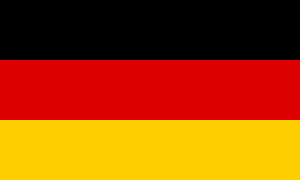
The German vineyards are almost as ancient as the French, of Roman origin. Germany produces essentially white wines, from dry to sweet, some amongst the best in the world, sparkling wines (the sekt) and a small but growing production of red wines. Most of the vineyards are located in the South-West of the country and the best are along the Rhine river and its tributaries.
Surface : 102 000 ha
Production : 9 Mhl
Consumption : 20 Mhl
Terroir :
Main regions
Legislation
Complex system with more than 2000 denominations :
. Kabinett (dry)
. Spätlese (late harvest)
. Auslese (later harvest/Spätlese)
. Berenauslese (selection of noble grape)
. Eiswein (ice wine, botrytised frozen grape)
. Trockenbeerenauslese (selection of over ripe grapes)
Sites :
